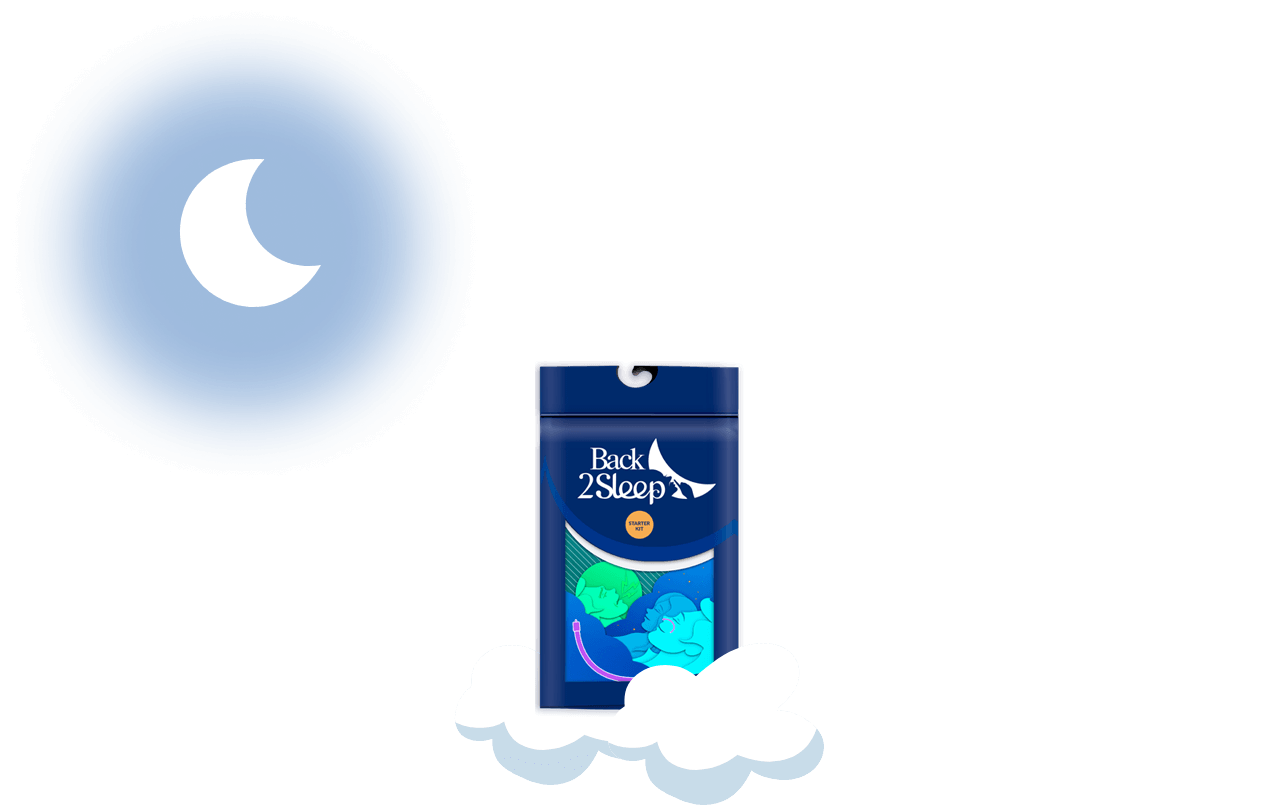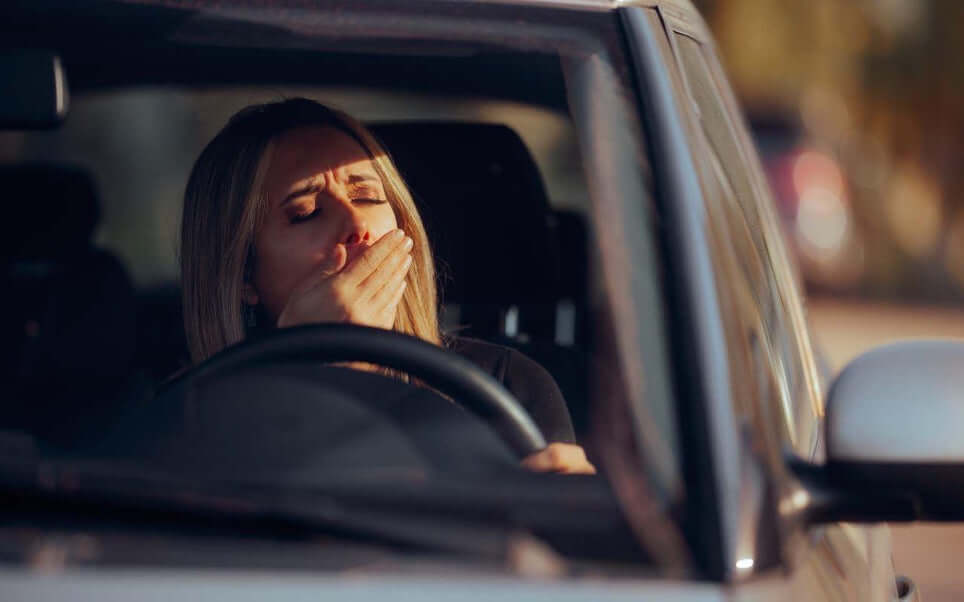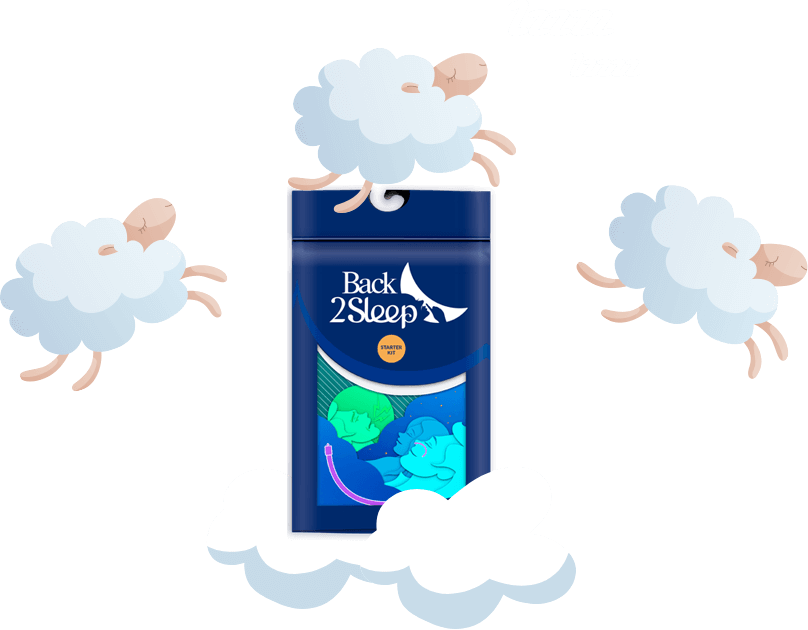What is Polygraphy? Complete Definition and Sleep Study Guide 2025
Discover how ventilatory polygraphy helps diagnose sleep apnea—the affordable, convenient alternative to in-lab sleep studies
Polygraphy—derived from the Greek words "poly" (many) and "graphein" (to write/record)—might remind you of criminal investigations and lie detector tests. However, in the field of sleep medicine, polygraphy takes on an entirely different and life-saving purpose. Far from interrogation rooms, sleep polygraphy (also called respiratory polygraphy or ventilatory polygraphy) serves as a powerful diagnostic tool for deciphering the mysteries of our nights and identifying critical sleep disorders.
By measuring various physiological parameters during sleep—including breathing patterns, heart rate, oxygen levels, and body movements—polygraphy helps healthcare professionals understand and treat sleep disorders. This examination proves particularly valuable for identifying sleep apnea, a dangerous condition where breathing becomes irregularly interrupted throughout the night, threatening both sleep quality and overall health. With over 936 million adults worldwide affected by sleep-disordered breathing, accurate and accessible diagnostic tools like polygraphy have never been more important.
2025 Update: Recent studies confirm home respiratory polygraphy achieves equivalent diagnostic effectiveness compared to in-laboratory polysomnography for moderate-to-severe OSA, while costing substantially less. This breakthrough makes sleep apnea diagnosis more accessible than ever before.

Understanding the Components: What Does a Polygraph Measure?
Modern sleep polygraphy devices incorporate multiple sophisticated sensors working together to create a comprehensive picture of your sleep physiology. Each component plays a specific role in detecting abnormalities and providing doctors with the data they need for accurate diagnosis.
🌬️ Breathing Sensors: The Watchful Eyes
Respiratory sensors serve as the polygraph's primary monitoring system, vigilantly tracking every breath throughout the night. These sensors measure two critical parameters:
- Airflow through your nose and mouth: Nasal cannulas or thermistors detect the temperature changes and pressure variations with each breath, identifying when airflow stops (apnea) or becomes significantly reduced (hypopnea).
- Chest and abdominal movements: Respiratory effort belts wrapped around your torso track the mechanical effort your body makes to breathe, distinguishing between obstructive events (where effort continues despite no airflow) and central events (where both airflow and effort cease).
These measurements allow physicians to detect respiratory anomalies such as obstructive sleep apnea, central sleep apnea, hypopneas, and other nocturnal breathing irregularities that might otherwise go unnoticed.
❤️ Heart Rate Monitors: Cardiovascular Insights
Cardiac monitoring during polygraphy provides invaluable data about your cardiovascular health while you sleep. The heart rate monitor—typically using pulse oximetry or ECG leads—records:
- Heart rate variations throughout the night
- Heart rate patterns associated with respiratory events
- Cardiac arrhythmias that may occur during sleep
⚠ This cardiovascular information proves especially critical for patients with sleep apnea, as untreated OSA significantly increases risks of hypertension, heart attack, stroke, and heart failure. The polygraphy data helps doctors assess these cardiovascular impacts and urgency of treatment.
🔄 Motion Detectors: Tracking Sleep Quality
The polygraph's movement sensors (accelerometers or actigraphs) capture every rotation, shift, and quiver during sleep. This motion data provides crucial clues about:
- Sleep quality indicators: Excessive movement may suggest fragmented, non-restorative sleep
- Body position changes: Many patients experience positional sleep apnea, where symptoms worsen when sleeping on their back
- Periodic limb movements: Detection of conditions like restless legs syndrome or periodic limb movement disorder
Understanding your movement patterns helps paint a complete picture of sleep architecture and identify additional factors affecting sleep quality beyond respiratory events.
💨 Oxygen and Carbon Dioxide Sensors: Gas Exchange Monitoring
Perhaps the most critical measurements in polygraphy involve tracking blood gas levels throughout the night:
- Pulse Oximetry (SpO2): A small clip on your finger measures oxygen saturation in your blood—essentially how oxygen-rich your blood is. Healthy oxygen saturation during sleep should remain above 90%; repeated dips below this threshold indicate respiratory disturbances requiring treatment.
- Transcutaneous CO2 Monitoring: Some advanced polygraphs also track carbon dioxide levels, detecting hypoventilation (insufficient breathing to eliminate CO2) or hypercapnia (excessive CO2 buildup). This proves especially important for patients with obesity hypoventilation syndrome or neuromuscular disorders.
These measurements directly reflect how effectively your body exchanges gases during sleep—a fundamental indicator of respiratory health and a key diagnostic criterion for sleep-disordered breathing.

Why Polygraphy Matters: Clinical Importance in Sleep Medicine
🔬 Accurate Diagnosis of Sleep Disorders
Polygraphy's primary value lies in its ability to objectively diagnose sleep-related breathing disorders with remarkable accuracy. The comprehensive physiological data collected enables healthcare professionals to:
- Detect respiratory interruptions: Identify apneas (complete cessation of breathing ≥10 seconds) and hypopneas (significant reduction in airflow with oxygen desaturation or arousal)
- Calculate the Apnea-Hypopnea Index (AHI): Determine severity by counting respiratory events per hour (mild: 5-14, moderate: 15-29, severe: ≥30 events/hour)
- Monitor abnormal breathing patterns: Identify Cheyne-Stokes respiration, respiratory effort-related arousals (RERAs), and flow limitations
- Assess oxygen desaturations: Track oxygen dip frequency and duration, calculating the Oxygen Desaturation Index (ODI)
According to 2025 research, polygraphy demonstrates 82.5% sensitivity and 90% specificity for diagnosing moderate-to-severe OSA when compared to polysomnography—making it a reliable, evidence-based diagnostic tool.
💊 Personalized Treatment Planning
The detailed information gathered via polygraphy enables physicians to develop tailor-made treatment strategies customized to each patient's specific condition. Based on polygraphy results, doctors can recommend:
- Lifestyle modifications: Weight loss programs, sleep position training, alcohol avoidance
- Continuous Positive Airway Pressure (CPAP) therapy: The gold standard for moderate-to-severe OSA
- Oral appliances: Mandibular advancement devices for mild-to-moderate OSA or CPAP-intolerant patients
- Surgical interventions: When anatomical factors contribute significantly to obstruction
- Innovative solutions like the Back2Sleep nasal orthosis: Non-invasive devices that maintain airway patency
By precisely understanding each case's specifics—severity, oxygen desaturation patterns, positional dependency—clinicians can target interventions more effectively, improving treatment adherence and outcomes.
⚖️ Polygraphy vs. Polysomnography: Understanding the Differences
While polysomnography (PSG) remains the clinical gold standard for comprehensive sleep evaluation, polygraphy offers a practical, cost-effective alternative with specific advantages:
| Feature | Polygraphy (Type III) | Polysomnography (Type I) |
|---|---|---|
| Location | Home or clinic | Hospital sleep laboratory |
| Parameters Measured | Breathing, heart rate, oxygen, movement (4-7 channels) | Above + brain waves (EEG), eye movement (EOG), muscle activity (EMG), 10+ channels |
| Sleep Staging | No (estimates sleep time) | Yes (full sleep architecture analysis) |
| Setup Complexity | Simple, patient can self-apply | Complex, requires trained technician |
| Comfort Level | High (sleep in own bed) | Lower (unfamiliar lab environment) |
| Cost | $500-$1,500 / €400-€1,200 | $2,000-$6,700 / €1,800-€6,000 |
| Wait Time | Days to weeks | Often months |
| Best For | OSA diagnosis, treatment monitoring | Complex sleep disorders, insomnia, narcolepsy, parasomnias |
| Insurance Coverage | Usually covered as first-line test | Often requires failed home test first |
The key distinction: polygraphy focuses exclusively on respiratory and cardiac parameters, making it ideal for diagnosing sleep-disordered breathing. It cannot, however, measure actual sleep stages (N1, N2, N3, REM) as it lacks EEG monitoring. For most patients suspected of having sleep apnea—particularly those at intermediate-to-high risk—polygraphy provides sufficient diagnostic information at a fraction of the cost.
Clinical Evidence (2025): A landmark randomized controlled trial involving 430 patients demonstrated that home respiratory polygraphy management was non-inferior to polysomnography for OSA treatment effectiveness (measured by Epworth Sleepiness Scale improvement and quality of life), while saving €416.7 per patient on average. This research supports polygraphy as the preferred first-line diagnostic approach for most sleep apnea patients.
4 Key Advantages of Home Polygraphy
🏠 Convenience & Comfort
Sleep in your own bed, in your natural environment. No overnight hospital stays, no unfamiliar surroundings. Studies show patients often sleep better at home, producing more accurate representative data of typical sleep patterns.
💰 Cost-Effective Diagnosis
Polygraphy costs 50% less than polysomnography—saving patients €400+ per test. Insurance typically covers home sleep tests as first-line diagnostic tools, with faster approval than in-lab studies requiring pre-authorization.
⚡ Quick & Easy Setup
Straightforward self-application with simple instructions. No technician required. Pick up device from clinic, follow step-by-step guide, return next day. Most patients master setup in under 10 minutes.
📊 Clinically Validated
Proven 82% sensitivity and 90% specificity for OSA diagnosis. European medical guidelines support polygraphy as reliable first-line testing for patients with intermediate-to-high OSA probability, backed by extensive research.

When Should You Have a Polygraphy Test? Clinical Indications
🚨 Persistent Sleep Disorder Symptoms
If you experience any of the following symptoms consistently, polygraphy may be warranted:
These symptoms signal potential sleep-disordered breathing requiring precise evaluation. Don't dismiss chronic fatigue as "normal"—it may indicate treatable OSA affecting your health and safety.
👨⚕️ After Specialist Recommendation
When a physician or sleep specialist suspects sleep apnea based on clinical assessment, they may prescribe polygraphy to confirm diagnosis. The American Academy of Sleep Medicine (AASM) guidelines support using home sleep apnea testing (HSAT) via polygraphy for patients meeting these criteria:
- High pre-test probability of moderate-to-severe OSA
- No significant comorbid medical conditions (heart failure, COPD, neuromuscular disease)
- No suspicion of other sleep disorders (central sleep apnea, insomnia, narcolepsy, parasomnias)
- Able to complete the test independently at home
Your doctor's clinical judgment, combined with screening questionnaires like the STOP-BANG or Epworth Sleepiness Scale, guides the decision to recommend polygraphy versus more comprehensive polysomnography.
⚠️ In Cases of Increased Health Risks
Certain medical conditions and risk factors substantially increase sleep apnea likelihood. Polygraphy may be suggested even without obvious symptoms for patients with:
- Obesity (BMI ≥30): Adipose tissue around the neck and throat increases airway collapse risk
- Hypertension (High Blood Pressure): 50-70% of treatment-resistant hypertension patients have undiagnosed OSA
- Type 2 Diabetes: Bidirectional relationship—OSA worsens insulin resistance; diabetes increases OSA risk
- Cardiovascular Disease: OSA contributes to heart attacks, strokes, atrial fibrillation, and heart failure
- Large Neck Circumference: >17 inches (43cm) in men, >16 inches (40.5cm) in women
Proactive screening via polygraphy in these high-risk populations enables early intervention, potentially preventing serious cardiovascular and metabolic complications before they manifest.
📈 Assessing Treatment Efficacy
If you're already undergoing treatment for sleep apnea, follow-up polygraphy serves important purposes:
- CPAP Effectiveness Verification: Confirm therapy adequately controls respiratory events at prescribed pressure
- Oral Appliance Titration: Assess whether mandibular advancement device sufficiently reduces AHI
- Post-Surgical Evaluation: Verify success after uvulopalatopharyngoplasty (UPPP), tonsillectomy, or other procedures
- Weight Loss Impact: Reassess severity after significant weight reduction to determine if therapy can be discontinued
Regular monitoring ensures your therapeutic plan remains optimally calibrated, adapting to changes in severity or treatment tolerance over time.

Where Can You Get a Polygraphy Test? Available Options
🏥 Specialized Sleep Centers
Accredited sleep centers represent the most common and comprehensive option for polygraphy services. These facilities offer:
- Board-certified sleep medicine specialists for consultation and results interpretation
- State-of-the-art equipment maintained to highest clinical standards
- Trained respiratory physiologists and sleep technicians for device instruction
- Integration with treatment services (CPAP clinics, dental sleep medicine, surgical referrals)
Sleep centers provide both in-laboratory polygraphy (with technician supervision) and home polygraphy rental programs, allowing flexibility based on patient needs and clinical appropriateness.
🏨 Hospitals and Medical Clinics
Many hospitals with neurology, pulmonology, or ENT departments offer polygraphy examinations as part of their sleep medicine services. These settings provide:
- Convenient access through existing hospital networks and physician referrals
- Coordination with other specialties for complex cases
- Insurance billing through established hospital systems
- Both diagnostic testing and treatment initiation in one location
Hospital-based programs often serve as excellent options for patients already receiving care within that healthcare system or those with complex medical histories requiring multidisciplinary management.
🏡 At-Home Polygraphy: The Convenient Choice
Home sleep apnea testing (HSAT) via portable polygraphy has become increasingly popular, offering maximum convenience without sacrificing diagnostic accuracy. The typical process involves:
- Device Pick-Up: Visit clinic to receive portable polygraph device and instructions
- Evening Setup: Apply sensors following step-by-step guide (typically takes 5-15 minutes)
- Overnight Recording: Sleep naturally in your own bed while device collects data
- Morning Removal: Remove sensors and return device to clinic
- Results Analysis: Respiratory physiologist analyzes data within 1-2 weeks
Home polygraphy proves especially beneficial for patients who:
- Have mobility challenges making travel to sleep labs difficult
- Experience anxiety about sleeping in unfamiliar laboratory environments
- Live in rural areas far from sleep centers
- Need rapid diagnosis due to safety-sensitive occupations (commercial drivers, pilots)
Important Note: While home polygraphy offers convenience, it may not be suitable for all patients. Those with significant cardiac disease, neuromuscular disorders, severe COPD, or suspicion of central sleep apnea typically require in-laboratory polysomnography for comprehensive evaluation. Always follow your sleep specialist's recommendations regarding appropriate testing.
💼 Consultation with Sleep Specialists
Before proceeding with polygraphy, initial consultation with a sleep medicine physician proves invaluable. This specialist will:
- Conduct thorough sleep history and symptom assessment
- Perform physical examination focusing on airway anatomy
- Determine whether polygraphy or polysomnography is most appropriate
- Guide you to the optimal testing location based on your specific circumstances
This consultation ensures you receive the right test, in the right setting, leading to accurate diagnosis and appropriate treatment planning from the start.
How Does a Polygraphy Examination Work? Step-by-Step Process
📋 Pre-Examination Preparation
Proper preparation enhances polygraphy accuracy and ensures valid results. Before your sleep study, follow these guidelines:
Your sleep clinic will provide specific preparation instructions tailored to your situation. Some patients may need to discontinue certain medications (like sedatives) temporarily—always consult your physician before stopping any medication.
🔧 Examination Procedure: What to Expect
During the polygraphy examination, various sensors will be strategically placed to monitor your physiological parameters throughout the night:
- Nasal Cannula or Thermistor: Placed just below nostrils to detect airflow temperature changes and breathing patterns
- Respiratory Effort Belts: Wrapped around chest and abdomen to measure breathing movements and effort
- Pulse Oximeter: Clip attached to fingertip to continuously monitor oxygen saturation and heart rate
- Position Sensor: Small device attached to chest or worn on wrist to track body position (back, side, stomach)
- Actigraphy Monitor (optional): Wristwatch-like device to track movement and estimate sleep/wake periods
For home polygraphy: You'll receive detailed instructions (often with picture guides or video demonstrations) on how to apply each sensor. Most modern devices feature color-coded connectors and intuitive designs minimizing setup errors. The device automatically begins recording when you start sleeping and stops when removed in the morning.
For in-lab polygraphy: A trained technician applies all sensors, tests their function, and monitors recording quality throughout the night. While this provides higher data quality assurance, most patients sleep less naturally in laboratory environments.
Throughout the night, you'll sleep as normally as possible. The sensors remain in place, continuously recording data. While the equipment may feel slightly unusual initially, most patients adapt quickly and achieve sufficient sleep for diagnostic purposes.
📊 Result Interpretation: Understanding Your Data
After completing your polygraphy, a respiratory physiologist or sleep specialist will analyze the collected data to identify any sleep disorders. The interpretation focuses on several key metrics:
| Parameter | What It Measures | Diagnostic Significance |
|---|---|---|
| AHI (Apnea-Hypopnea Index) | Average number of apneas + hypopneas per hour of sleep | <5 = normal; 5-14 = mild OSA; 15-29 = moderate OSA; ≥30 = severe OSA |
| ODI (Oxygen Desaturation Index) | Number of times oxygen saturation drops ≥3-4% per hour | Reflects severity of oxygen deprivation; higher ODI = worse cardiovascular risk |
| Minimum SpO2 | Lowest oxygen saturation reached during sleep | <85% indicates significant oxygen deprivation; <80% = severe desaturation |
| Time Below 90% SpO2 | Percentage of sleep time with oxygen saturation <90% | >10% of night below 90% suggests significant nocturnal hypoxemia |
| Heart Rate Variations | Changes in pulse associated with respiratory events | Bradycardia-tachycardia pattern confirms respiratory-related arousals |
| Positional Dependency | AHI difference between supine (back) vs. lateral (side) sleeping | >50% reduction in lateral position = positional OSA (may benefit from positional therapy) |
Your specialist will discuss results within 1-2 weeks, explaining what the data reveals about your sleep breathing and recommending appropriate next steps—whether that's CPAP therapy, oral appliances, lifestyle modifications, further testing, or innovative solutions like the Back2Sleep nasal orthosis.
What if Results Are Inconclusive? Occasionally, home polygraphy produces insufficient data due to sensor displacement, equipment malfunction, or inadequate sleep duration. In such cases, the test may need repeating—either at home or in a supervised laboratory setting. Insurance typically covers one retry if the initial study is technically inadequate.

The Back2Sleep Solution: Innovative Intranasal Orthosis
🔍 How Does the Back2Sleep Device Work?
The Back2Sleep intranasal orthosis represents a breakthrough in non-invasive sleep apnea management. Unlike bulky CPAP machines requiring masks and electricity, this medical-grade silicone device works through a simple yet ingenious mechanism:
- Nasal Insertion: The soft, flexible tube is gently inserted through one nostril, extending to the back of the throat
- Airway Maintenance: The device physically prevents soft tissue collapse that causes obstructive apneas during sleep
- Natural Breathing: Creates a patent airway channel, allowing unobstructed airflow throughout the night
- Comfortable Design: Medical-grade silicone conforms to individual anatomy; available in multiple sizes for perfect fit
By maintaining a constant open passage from nose to throat, the Back2Sleep orthosis eliminates the source of obstruction rather than forcing air pressure like CPAP therapy.
✨ Advantages for Sleep Disorder Management
Compared to traditional CPAP devices—often perceived as cumbersome, noisy, and claustrophobic—the Back2Sleep intranasal orthosis offers compelling benefits:
The Back2Sleep orthosis proves particularly beneficial for individuals with mild-to-moderate sleep apnea, those who snore without apnea, and CPAP-intolerant patients seeking alternatives. Clinical validation demonstrates significant symptom improvement and partner satisfaction.
Proven Results: With over 1 million devices sold and a 92% effectiveness rate, Back2Sleep has helped countless patients reclaim restful sleep without the burden of traditional CPAP therapy. The Starter Kit (€39) includes four size options, ensuring perfect fit for every anatomy, with express 48-hour delivery and a 15-day money-back guarantee.
Frequently Asked Questions About Polygraphy
❓ Is polygraphy painful or uncomfortable?
Rest assured, polygraphy is completely non-invasive and painless. While the idea of wearing multiple sensors might seem daunting, these devices are specifically designed for maximum comfort. The sensors attach gently to your skin using hypoallergenic adhesive or elastic bands—most patients quickly forget they're wearing them. You'll be able to move, change positions, and sleep naturally throughout the night. The most common complaint is minor skin irritation from adhesive, which resolves within hours after removal.
⏰ How long does a polygraphy examination last?
A complete polygraphy examination typically lasts an entire night—approximately 7 to 9 hours to capture multiple complete sleep cycles. Recording full sleep duration ensures adequate data for accurate AHI calculation and detection of breathing irregularities that may occur predominantly during REM sleep (which concentrates in the latter half of the night). The exact duration may vary based on your natural sleep schedule and the sleep center's protocols, but most patients spend roughly the same amount of time under monitoring as they would normally sleep.
🔍 Can polygraphy diagnose all types of sleep disorders?
While polygraphy excels at detecting respiratory-related sleep disorders—particularly obstructive sleep apnea, central sleep apnea, and nocturnal hypoxemia—it has inherent limitations. Polygraphy cannot diagnose conditions requiring brain wave analysis (EEG), such as:
- Primary insomnia (difficulty falling/staying asleep)
- Narcolepsy (excessive daytime sleepiness with cataplexy)
- Parasomnias (sleepwalking, REM behavior disorder, night terrors)
- Periodic limb movement disorder (PLMD)
- Certain types of central sleep apnea
For these complex disorders, full polysomnography with EEG monitoring remains necessary. Your sleep specialist will determine which test appropriately addresses your specific symptoms and clinical presentation.
💵 How much does polygraphy cost, and is it covered by insurance?
Polygraphy costs significantly less than polysomnography:
- Home Sleep Apnea Testing (HSAT): $500-$1,500 (€400-€1,200)
- In-Lab Polygraphy: $800-$2,000 (€700-€1,800)
- In-Lab Polysomnography: $2,000-$6,700 (€1,800-€6,000)
Insurance Coverage: Most insurance plans, including Medicare, cover medically necessary sleep studies when prescribed by a physician for suspected sleep apnea. Many insurers now require home sleep testing as first-line before approving more expensive in-laboratory polysomnography. Typical coverage includes 80-100% of costs after deductible, though pre-authorization may be required. Always verify coverage with your insurance provider before scheduling.
📱 Can smartphone apps replace polygraphy for sleep apnea diagnosis?
No, smartphone apps cannot replace polygraphy for medical diagnosis of sleep apnea. While sleep tracking apps can provide general insights about sleep duration and movement patterns, research demonstrates their results do not correlate with polysomnography or polygraphy data. Consumer sleep apps lack FDA approval for medical diagnostic purposes and cannot measure critical parameters like oxygen saturation, airflow cessation, or respiratory effort—all essential for OSA diagnosis. Use sleep apps for general wellness tracking, but rely on medical-grade polygraphy or polysomnography for accurate sleep disorder diagnosis and treatment decisions.
🔄 What happens if my polygraphy results are inconclusive?
Occasionally (5-15% of cases), polygraphy produces technically inadequate or ambiguous results due to insufficient sleep duration, sensor displacement, equipment malfunction, or borderline AHI values. In these situations:
- Repeat Home Study: Most common approach—perform second night of recording, often with refined instructions
- In-Laboratory Testing: Upgrade to supervised polysomnography for higher data quality and sleep technician oversight
- Split-Night Study: First half diagnoses OSA; second half titrates CPAP therapy if OSA confirmed
Insurance typically covers one repeat study if the initial attempt was technically inadequate (not patient's fault). Your sleep specialist will guide the most appropriate next step based on your specific situation and clinical suspicion level.
Conclusion: Polygraphy as Your Gateway to Better Sleep
Sleep polygraphy has revolutionized access to sleep apnea diagnosis, transforming what was once a costly, inconvenient in-laboratory ordeal into a comfortable, affordable home-based examination. By accurately measuring respiratory parameters, oxygen levels, heart rate, and movement patterns, polygraphy provides physicians with the essential data needed to diagnose obstructive sleep apnea and guide appropriate treatment.
The compelling advantages of polygraphy—50% cost savings, home convenience, clinical validation, and insurance coverage—make it the preferred first-line diagnostic tool for most patients with suspected sleep-disordered breathing. With sensitivity of 82% and specificity of 90% for moderate-to-severe OSA, polygraphy delivers reliable results without the waitlists, expense, and discomfort associated with traditional polysomnography.
Take Action Today: If you experience chronic snoring, excessive daytime sleepiness, witnessed breathing pauses, or other sleep apnea symptoms, don't wait. Consult a sleep specialist to determine if polygraphy is right for you. Early diagnosis and treatment prevent serious cardiovascular complications, improve quality of life, and may save your life.
Remember that polygraphy represents just the beginning of your sleep health journey. Once diagnosed, various effective treatments exist—from CPAP therapy and oral appliances to lifestyle modifications and innovative devices like the Back2Sleep intranasal orthosis. The key is taking that first step: getting properly diagnosed through polygraphy so you can finally achieve the restorative, healthy sleep you deserve.
Ready to Transform Your Sleep Quality?
Whether you need diagnosis through polygraphy or treatment with innovative solutions, Back2Sleep is here to help you breathe easier and sleep better.
Additional Resources:








